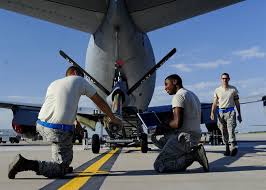The aircraft hydraulic system is a complex network of components that utilize fluid power to perform various functions, such as controlling flight surfaces, extending and retracting landing gear, and operating braking systems. This system relies on hydraulic fluid, typically a type of oil, to transmit power and enable precise control of vital aircraft operations.
Components of an Aircraft Hydraulic System
An aircraft hydraulic system comprises several key components, each playing a specific role in the overall functionality of the system. These include:
A. Hydraulic Fluid: The hydraulic fluid serves as the medium for transmitting power and lubricating system components. It has very specific properties such as high viscosity index and resistance to very high or extreme temperatures and pressure. This helps to ensure optimal system performance.
B. Hydraulic Pump: The hydraulic pump is responsible for generating the necessary hydraulic pressure by pressurizing the hydraulic fluid. The way it works is to take mechanical energy and turn it into hydraulic energy. This is then used to power other system components.
1. Actuators: Actuators are devices that convert hydraulic pressure into mechanical force, allowing for the movement of flight control surfaces, landing gear, and other aircraft components. Common types of actuators include hydraulic cylinders and hydraulic motors.
2. Control Valves: Control valves regulate the flow and direction of hydraulic fluid within the system. They ensure that the appropriate amount of fluid is supplied to different components, enabling precise control of various aircraft operations.
3. Reservoir and Filters: The hydraulic system includes a reservoir that stores the hydraulic fluid and filters that remove contaminants, ensuring the cleanliness and integrity of the fluid. Clean hydraulic fluid is crucial for maintaining system efficiency and preventing component damage.
Advantages of Aircraft Hydraulic Systems
Aircraft hydraulic systems offer several advantages over alternative systems, such as electrical or mechanical systems. These advantages include:
1. High Power-to-Weight Ratio: Hydraulic systems provide a high power output relative to their weight, making them suitable for applications requiring significant force, such as landing gear retraction or flight control surface movements.
2. Precise Control: Hydraulic systems enable precise control of aircraft operations due to the ability to modulate hydraulic pressure accurately. This precise control enhances the safety and maneuverability of the aircraft.
3. Reliability: Hydraulic systems are known for robustness and reliability. The components are designed to overcome very demanding operating conditions. Proper maintenance and regular inspections help keep the parts going long term.
4. Redundancy: Many aircraft hydraulic systems incorporate redundant components and backup systems to ensure fail-safe operation. This redundancy minimizes the risk of complete system failure and enhances overall flight safety.
Evolving Technologies and Future Outlook
As technology continues to advance, aircraft hydraulic systems are also undergoing significant improvements. Innovations in hydraulic fluid formulations, system design, and component materials aim to enhance efficiency, reduce weight, and minimize environmental impact. Additionally, the integration of electronic control systems with hydraulic systems opens up new possibilities for enhanced automation and safety features.
For more information on aircraft hydraulic systems, read Proponents in-depth article here.


No comments yet